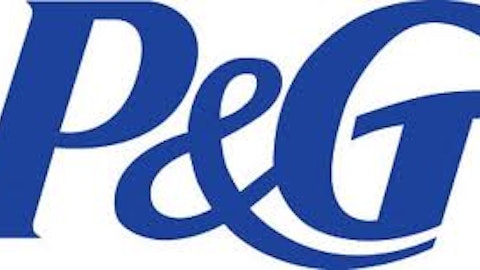
Does price really matter?
With its market cap of more than $250 billion, Wal-Mart operates its retail stores in a number of different formats today. It’s three key business segments include Wal-Mart Stores, Inc. (NYSE:WMT) U.S., Wal-Mart International, and Sam’s Club.
Although Wal-Mart has competed for years on price, there is one area in particular, that of specialization, where it may fall a bit behind. With this in mind, savvy consumers who are seeking specialty products, or even customer service after the sale, may be better served elsewhere. For those who are still price conscious, especially with regard to consumer staples like canned goods and other more generic items, though, Wal-Mart Stores, Inc. (NYSE:WMT) may still offer the perfect solution.
In 1998, Wal-Mart opened a chain of grocery stores in the name of Wal-Mart Neighborhood Market. With the premise of being the “opposite” of its much larger superstores, the company aimed to woo shoppers with easier parking, aisles that were less crowded, and even a speedier checkout, a long-standing issue in Wal-Mart Stores, Inc. (NYSE:WMT)’s more traditional locations.
Over the years, Wal-Mart has also entered into the service arena, offering a myriad of options including banking, auto services and tires, eye examinations (including prescription eyewear), and cell phone plans.
This added convenience has pulled countless numbers of consumers into Wal-Mart Stores, Inc. (NYSE:WMT) stores, many who would not otherwise have considered the retailer, knowing that nowhere else can they pick up groceries, get the oil changed in the car, be tested for glaucoma, and apply for a home loan all in one place!
The competitors’ advantages
While the discount retailer Wal-Mart may stress its low prices, its close competitor, Target Corporation (NYSE:TGT), is more about appearing to be an “upscale discounter.” Over the past few years, Target has worked hard to re-define itself, touting quality, yet with comparatively low prices to boot.
From an investment standpoint, Target Corporation (NYSE:TGT) projects quality as well. For 45 consecutive years, the company has raised its shareholder dividend, currently offering a tad over 2% as far as dividend yield. And, thanks in large part to strong consumer spending in the company’s U.S. locations, Target is now eyeing an international expansion focused on Canada, with plans to open roughly 200 new stores in the great white north over the next five to ten years.
This aggressive growth has the potential to be a positive for both consumers and investors. In addition to likely share price growth, Target Corporation (NYSE:TGT)’s rate of dividend increases also appears quite positive over both the short and long-term horizon.
Another big box store, Costco Wholesale Corporation (NASDAQ:COST), has also come out with increased earnings, to the tune of more than 30% increase in just the second quarter of 2013 alone, due in large part to a more than 10% rise in its membership fees.
One big incentive for membership is that only members are allowed to purchase gasoline through the Costco pumps. And, as fuel prices have continued to bump up, the savings that can be obtained, even just one gallon at a time, all tend to add up. This can be great news for investors as, in addition, Costco Wholesale Corporation (NASDAQ:COST) has recently posted impressive numbers in terms of earnings per share, net income growth, and return on equity.
Similar to with Wal-Mart Stores, Inc. (NYSE:WMT), though, both Target Corporation (NYSE:TGT) and Costco Wholesale Corporation (NASDAQ:COST) have had to alter, at least somewhat, the way they offer their products in order to continue to successfully compete in the low price arena. Even consumers who are not brand loyal need a reason to choose between the many discount retailers competing for a share of their dollar.
The bottom line
While consumers won’t likely praise Wal-Mart Stores, Inc. (NYSE:WMT) for its happy or lucrative employment practices, the truth is that this big box retailer has a tremendous following of loyal shoppers, primarily due to its huge variety of products and its undeniably competitive pricing on goods and services. Although the company’s share price is currently close to its 52-week high, there is still room for equity growth, along with dividend income of $1.88 per share, while investors hold on to their shares.
The article Have Everyday Low Prices Trickled Down To Wal-Mart’s Shares? originally appeared on Fool.com.
Copyright © 1995 – 2013 The Motley Fool, LLC. All rights reserved. The Motley Fool has a disclosure policy.

